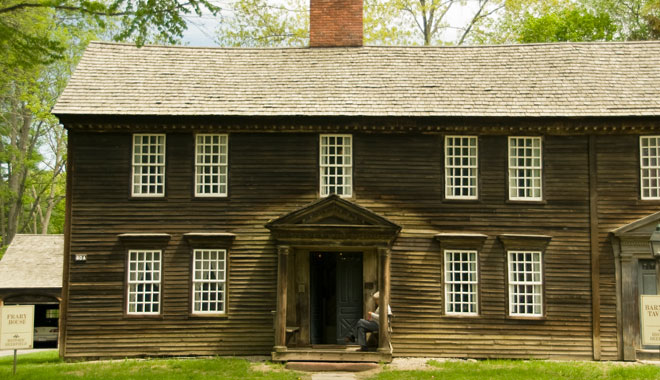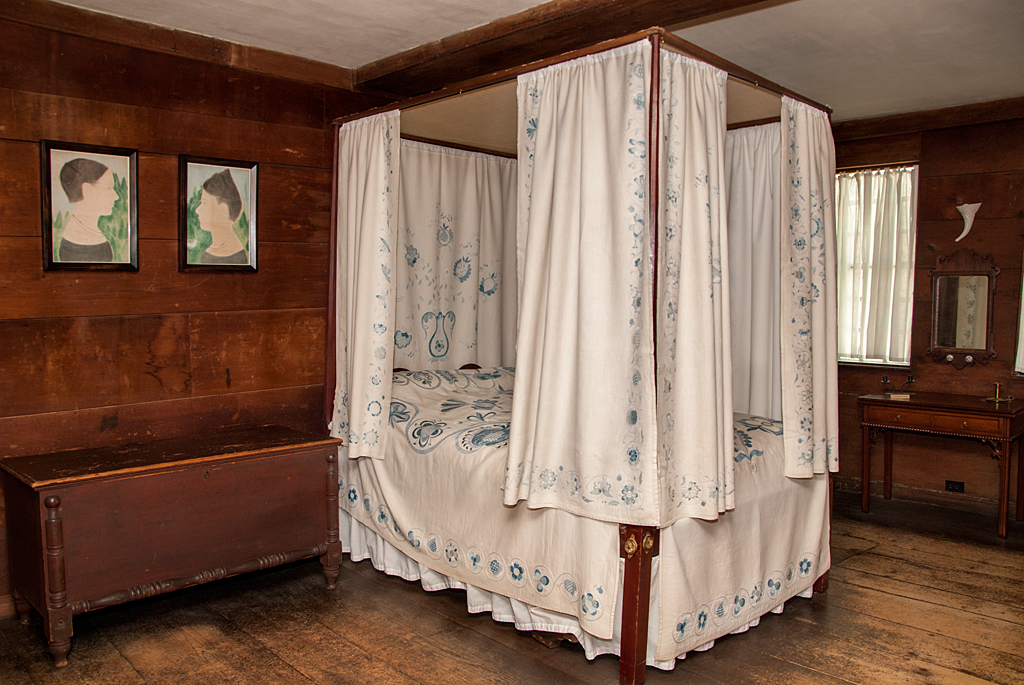The current exhibition on display in the lobby of the Flynt Center of Early New England Life, Deerfield: A Community of Craftwork in the Early 20th Century, showcases the work of the talented artisans who helped revive the village of Deerfield at the beginning of the twentieth century.

An extension of those works can be seen currently in the Frary House in the form of a spectacular set of embroidered bed curtains and coverlet made by Margaret Whiting and Ellen Miller, the founders of the Deerfield Society of Blue and White Needlework.

Visitors get a dramatic view of the bed hangings as they enter the south bed chamber. Whiting and Miller based the coverlet design on the quilted pattern from a late 18th-century wool whole cloth quilt attributed to Olive Curtiss Baker (1776-1844), now in the collection of Memorial Hall Museum. Likewise, a set of late 18th-century embroidered bed hangings attributed to Keturah Baldwin (possibly born 1772) served as the inspiration for the design of the curtains. Baldwin’s set was destroyed by fire in 1900, so Whiting and Miller’s designs are all that remain of the originals.
Phoebe Apperson Hearst (1842-1919), mother of William Randolph Hearst, commissioned the project in late 1896 or 1897 for her summer residence in Pleasanton, California. The set took several years for Whiting and Miller to complete, and in the process, garnered the Society much media attention as the centerpiece of several exhibitions in the northeastern United States, including Deerfield. Probably because of her changing tastes, Hearst never took possession of the bed hangings in California; in 1903 she gave them to a niece, who donated it to Memorial Hall Museum in the 1950s. In 1969, Historic Deerfield acquired the set when Memorial Hall sold the Frary House and its contents.
Visitors can see the bed hangings on hourly tours daily from 9:30 a.m. – 4:30 p.m.